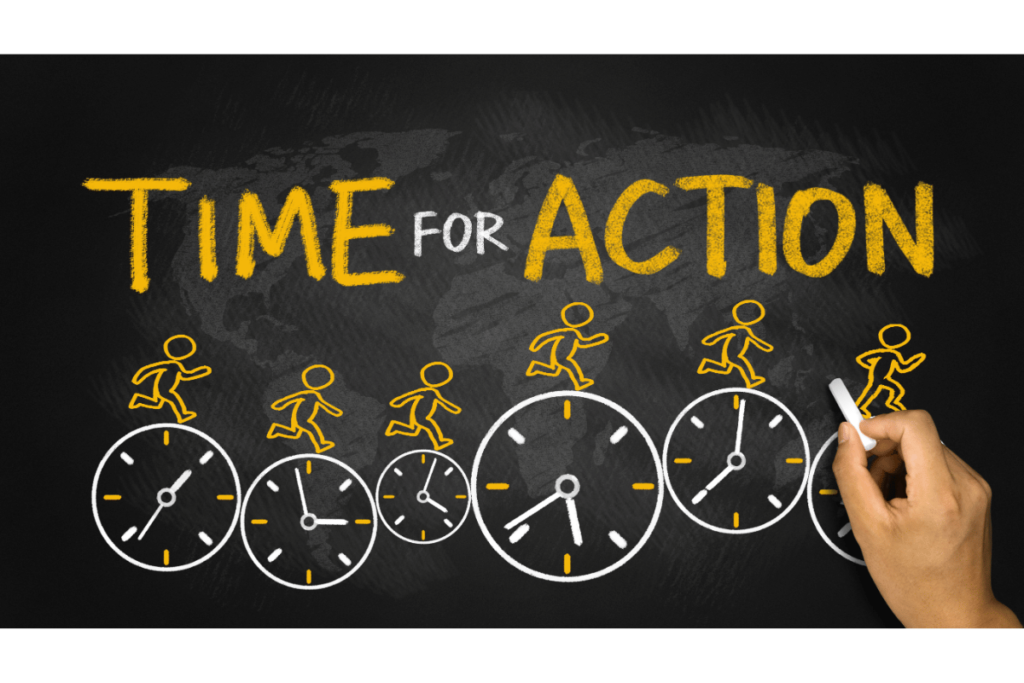Creating Urgency and Driving Action with Countdowns
How many times have you left a web page to rethink the purchase? Probably every time until you find yourself limited by the deadline to make a decision. The tactic of urgency significantly influences customers’ motivation. The study showed that adding a countdown timer to the website brings 332% more conversions, making this widget a powerful tool in marketers’ hands.
While countdown widgets create a feeling of scarcity and a limited offer, they can be too pushy and intrusive if done wrong. So, where is that balance that provides valuable offers for a client and makes a seller receive higher revenue? This mystery is revealed below.
How Do Countdown Timers Work?
Countdown widgets for websites are marketing tools that indicate the time left for getting a bonus or exclusive items. They are digital timers with a psychological nature: people, being in a hurry to miss out on a great deal, make decisions faster. This is also supported by the emotional aspect of feeling adrenaline because something is about to run out.
Just imagine that you planned to buy yourself a new pair of sneakers. You have been studying the models, materials, and brands. But you don’t rush into placing an order. However, what would be your action if you saw that the desired pair of shoes was last in this collection? Indeed, you won’t miss that chance!
Countdown timers are perfect for any purpose: to announce a new collection, promote an event, emphasize the last product items, or offer a hot deal. They are highly customizable and can be tailored to fit any website design for any niche.

Common Stereotypes Around Countdown Widgets
Not every marketer agrees that countdown timers can be nonintrusive and nonforceful. That is why numerous stereotypes exist about this topic. Find these misconceptions and their dispellings below.
- Countdown widgets only promote sales. Even though the timers work effectively to help the customer make a quick decision, they can also serve to announce an upcoming event or new product launch. These marketing tools can be both informative and practical.
- They are too aggressive and pushy. Timers can be forceful if not well-thought. An effective countdown timer does not deceive a customer but sets a deadline. And if you are not ready to join, there is always that little close button.
- Countdown timers are only applied to hot and time-limited offers. While these widgets create urgency, they can also be friendly reminders about the new collection so that users stay aware.
- These website elements require programming skills. Since there are so many countdown timer templates, even if they are free, there is no need to make changes in the code. You can just drag and drop it and customize it to your needs.
How to Craft a Countdown Timer That Boosts Conversion
Banal phrases like “Buy now”, “The last piece”, or “Today is the last day” with a red timer, which rather brings anxiety than interest, are not effective methods for creating countdown widgets. People get used to sales pitches, so more thorough research is needed. Learn what aspects to cover when preparing a countdown timer for your website.
Base Everything on Trust
Trust is the accelerator that builds long-term relationships with customers. This element can work exactly when choosing between you and the competitor. Thus, offering something within a deadline provides enough information to purchase without second thoughts. Place your contact details close to the offer, offer a chatting option, and show social proof.
Choose the Right Time
Displaying a countdown timer when first-second visitors open the website is unnecessary. Depending on your widget type and its purpose, you should calculate the most relevant time to show a timer with the offer. Is it an upsell or cross-sell flow? Or should it announce an event no one has to miss? Being in the right place at the right time is the best approach, especially in marketing.
Provide Value to a Client
There should be two winning sides: you and your customer. So, when making a time-limited offer, consider the value it will bring the client. In this aspect, user research should be applied to find the most relevant offer for a target audience.
Use the Nudging Tactic
Developed by Avinash Kaushik, a nudging technique uses pleasant ways to convince users to buy a service. Examples of the nudges are:
- providing information about the products left;
- showing a comparison of the services to offer the best one;
- illustrating satisfied customers;
- calculating delivery time;
- offering personalized experience.
Follow Up with the Client
Even if a decision is not made, there is still a chance to engage the customer via email. They can contain information about the remaining time before the event, new offers, or products the client would be potentially interested in based on their search history and preferences.
Use Interactive Content
The message on the countdown timer should contain visuals to boost the engagement rate. Marketers use images, videos, GIFs, games, and interactive elements to make shopping more joyful.
Give a Chance to Skip
Customers should not miss your offer; if so, they should be able to skip it. This also means that your countdown timer should not overlap the whole screen, making it impossible to see other content.
Test, Research, and Analyze
The only way to craft an ideal countdown timer is to test it, as your target audience is a unique group of customers who require a personal approach. By experimenting with different formats and examples of timers, analyze the key metrics like conversion and sales rate for future widget optimization.
Final Words
Countdown timers are practical tools that create a sense of exclusivity and scarcity. They motivate customers to make a decision and inform visitors about your plans. The main aspects on which an effective countdown timer is built are trust, relevant and valuable offers, the right showing time, a bit of budging, future follow-up, and continuous testing.







